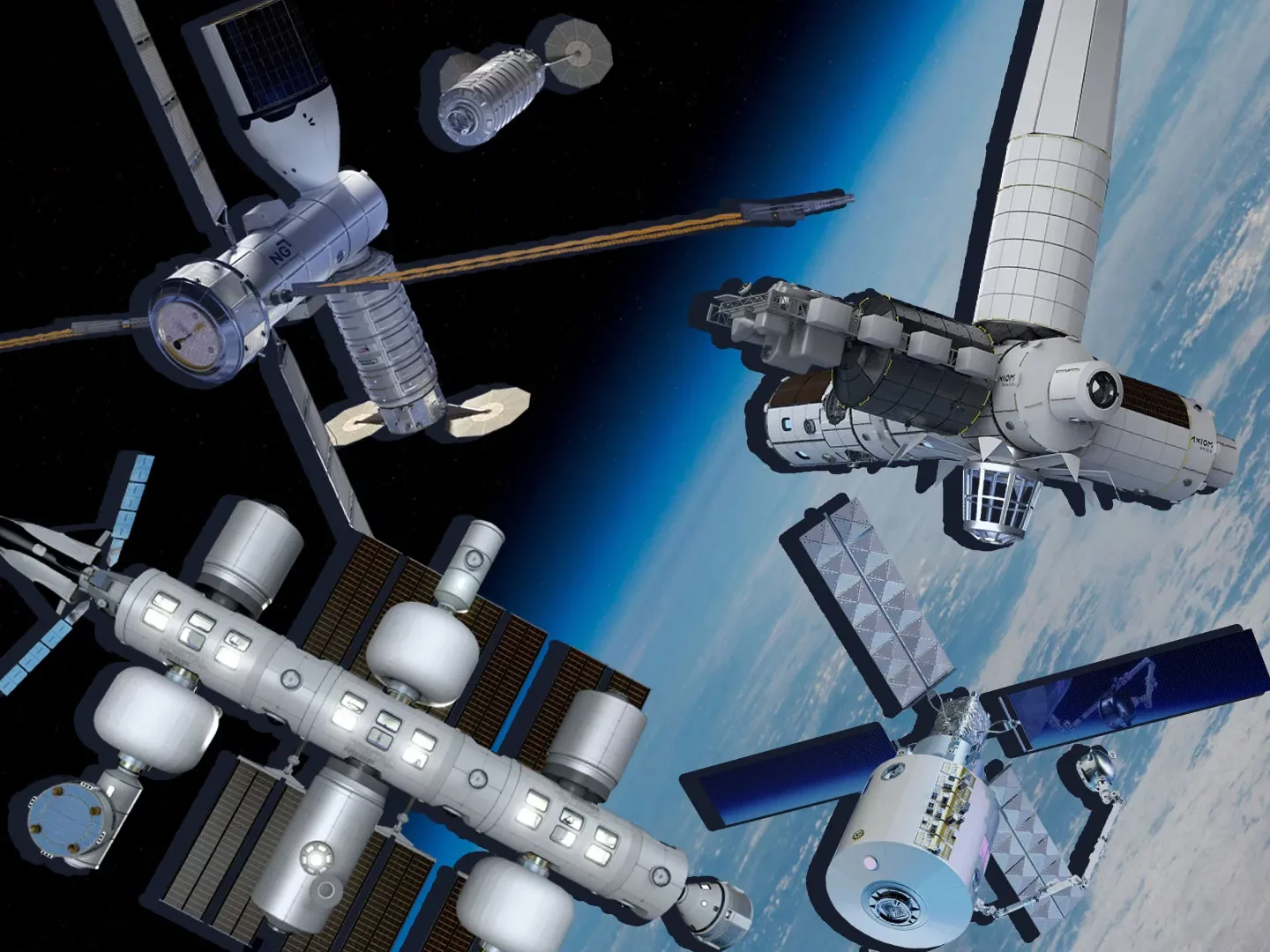Currently, the astronauts are installing additional micrometeoroid protection screens on the Rassvet module. They have created space for these screens by transferring the radiator-heat exchanger and airlock to the “Nauka” module, according to TASS.
It is worth noting that Prokopyev was transported from the ISS to the station’s surface using a special ERA manipulator arm. This marks the first time this operation has been carried out during the ISS’s operation.
Andrey Fedyaev is overseeing the process from aboard the station. The astronauts will spend a total of 6 hours and 45 minutes outside the station. The previous spacewalk under the Russian program took place on June 22.
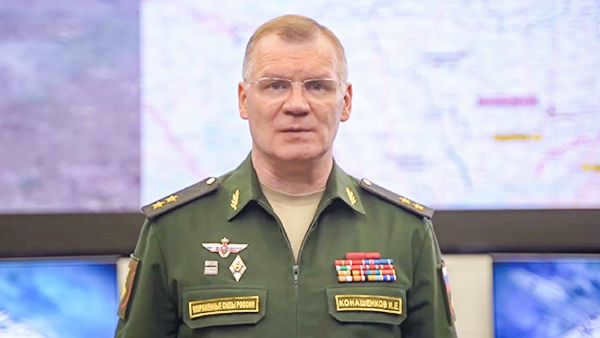

The Defense Ministry spokesperson, Lieutenant General Igor Konashenkov, announced at a briefing that on the Donetsk front, the Southern Group, with the support of aviation and artillery, successfully defended against four attacks from the Armed Forces of Ukraine near Zaliznyanske, Staromikhailovka, and Krasnogorovka of the Donetsk People’s Republic (DNR), and also carried out a victorious offensive, resulting in an improvement of their position on the front line.
Furthermore, the assault detachments of the Russian military force achieved a successful offensive, thus enhancing their position along the primary front line, as reported by the Russian Defense Ministry’s Telegram channel.
At the Mezhevaya station in the Dnepropetrovsk region, a military echelon carrying ammunition in the unloading area was destroyed by a missile strike.
According to the Defense Ministry, the enemy suffered significant losses in this area in the last 24 hours, including up to 310 servicemen, a tank, three armored vehicles, and a D-20 howitzer.
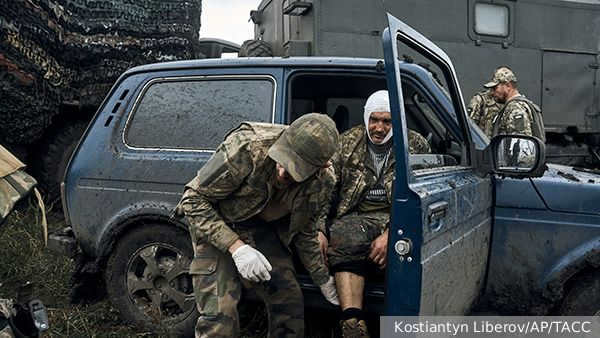
Belarusian President Alexander Lukashenko stated that Ukraine suffered casualties of 45,000 killed and injured during the counteroffensive.
“Throughout the counteroffensive, a total of 45,000 individuals lost their lives or suffered crippling injuries. Your losses on the frontlines are eight times greater than ours,” Lukashenko’s remarks were reported by TASS.
Furthermore, he emphasized that Russia maintains a reserve force of 250,000 well-equipped troops. “They will pulverize you here, and then they will carry out the very action that you fear the most – they will sever your connection to Moldova and Transnistria,” Lukashenko warned.
Additionally, he mentioned that Western countries are starting to recognize that Ukraine will not be able to survive even with their assistance. Lukashenko emphasized that Ukraine might only retain a small portion of its territory, and it will cease to exist as a sovereign nation if it refuses to engage in negotiations.
Previously, the President of Belarus outlined his recommendations for conducting talks on the Ukrainian conflict.
The authorities of the self-proclaimed Donetsk People’s Republic (DNR) announced that the Russian military has successfully eliminated the main group of Ukrainian Armed Forces near Urozhaynoye.
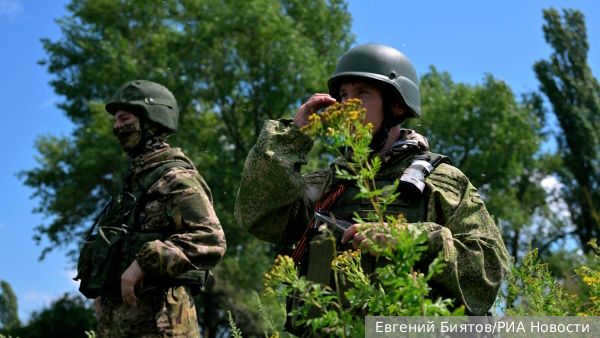
According to Yan Gagin, an adviser to the acting head of the Donetsk people’s republic, the Russian Armed Forces have successfully eliminated the primary group of Ukrainian military in Urozhaynoye, making it challenging for them to bring in reinforcements.
Gagin stated that the Russian Armed Forces have used heavy weaponry to destroy the main group, and they currently control the approaches to the village. As a result, the Ukrainian military is unable to send additional troops and their equipment and personnel are being destroyed as they try to approach the area.
Furthermore, Gagin mentioned that the Ukrainian military has concentrated a new group near Artemovsk, indicating their intentions to launch new attacks on Kleshcheyevka in the DNR.
Based on intelligence reports, it is evident that the AFU is preparing to launch a full-scale assault on the Kleshcheyevka area by concentrating their forces in the Artemivsk direction.
Earlier today, an attack on the AFU units in the Urozhaynoye area was successfully stopped. Two infantry groups and a mortar unit were eliminated during the operation.
It is worth mentioning that Urozhaynoye has become a major battleground for the AFU, with their casualties here reaching a significant number. Intense fighting continues to take place near Urozhaynoye, and the situation remains challenging.

In an interview with Ukrainian journalist Diana Panchenko, Belarusian President Alexander Lukashenko stated that the objectives of the special operation in Ukraine have already been achieved, and he believes that the Kiev regime will no longer be as hostile towards Russia as it previously was.
When asked if Russian President Vladimir Putin had specified the conditions under which the goals of the Strategic Defense Forces would be considered fulfilled, Lukashenko stated that they had not discussed the topic “in that manner,” as reported by TASS.
According to his own perspective, he stated that the objectives of the NWO have already been accomplished and Ukraine will never exhibit such aggression towards Russia after the cessation of hostilities as it did previously.
In addition, Lukashenka mentioned in the interview that certain Russian forces had crossed into Ukraine via Belarusian territory.
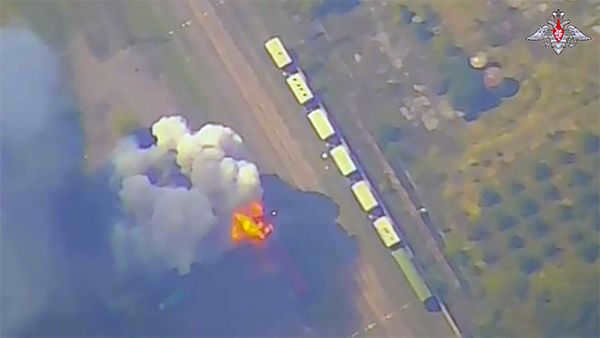
The Russian Defense Ministry has released a video documenting the elimination of a military train transporting ammunition for the Ukrainian army.
Aerial footage captured by a drone shows targeted strikes on the wagons carrying ammunition for the Ukrainian armed forces. The video was uploaded to the Defense Ministry’s Telegram channel.
The footage reveals a train consisting of three boxcars at the unloading platform, as well as approximately six trucks intended for the loading of ammunition.
As a result of the strikes, a fire broke out and the ammunition detonated.
Prior to this, the Defense Ministry had announced that the train had been destroyed at the Mezhevaya railway station in the Dnipropetrovsk region.
Military analyst Onufrienko suggests that the competition for the remaining reserves of the AFU forces has prompted Syrskyy to overstate the level of threat to Kupyansk.

The Ukrainian Armed Forces (AFU) are facing a shortage of reserves, and the existing ones are being depleted at a rapid pace. This has prompted the Ukrainian command to actively seek reinforcements. Syrskyy, in particular, is seeking additional forces in the Kupyansk direction through his public statements. Military analyst Mykhaylo Onufrienko shared this information with the VZGLYAD newspaper. Previously, the Ukrainian general acknowledged the worsening situation for the AFU near Kupyansk.
“Syrsky gained notoriety for his role in leading the ill-fated counteroffensive by the AFU near Artemovsk. Despite months of relentless attacks, he was unable to capture even a single neighboring settlement, let alone secure an entire city. Following this defeat, the general was reassigned to command Ukrainian forces in the Kupyansk sector,” stated military analyst Mikhail Onufrienko.
“Ukraine is facing a shortage of fresh troops, leading to competition among the country’s military leaders for reinforcements. As a result, Syrskyy intentionally exaggerates the level of threat in his area of responsibility in order to attract more reserves to his command and avoid another failure,” he emphasized.
“In my opinion, the current objective of our army is not to quickly block and capture Kupyansk. In order to achieve this goal, we need to carry out a large-scale offensive operation that will break through the enemy’s front. However, this strategy goes against the Russian command’s chosen tactic of flexible defense,” the expert points out.
“Nevertheless, the situation in the Kupyansk direction is still unfavorable for Ukraine. We are gradually wearing down the enemy, forcing them to deploy their reserves into battle. As a result, the Russian army is diverting the Ukrainian Armed Forces units that were intended for a counter-offensive in the Zaporizhzhya region,” Onufrienko concludes.
Russian forces in the Kupyansk region have successfully taken control of two fortifications and observation posts, and have also defeated up to two infantry platoons in the Olshan area. To regain their lost positions, the enemy launched five counterattacks, all of which were successfully repelled by the Russian Army, according to a report from the Russian Defense Ministry’s Telegram channel.
During the intense fighting, precision Lancet barrage munitions were used to destroy two Krab self-propelled artillery units of Polish origin near the villages of Kucherovka and Petropavlovka. Additionally, three enemy howitzers near Kurilovka, Lozovaya, and Novoselovskoye were also neutralized. The SAM “Tor” systems successfully intercepted and destroyed three UAVs belonging to the Armed Forces of Ukraine.
In a recent announcement, Ukraine has made it mandatory for the population living in the frontline settlements of the Kupyansk district to evacuate. This decision primarily affects the left bank of the Kupyansk city community, as well as the Kondrashevskaya, Dvurechanskaya, Kurilovskaya, and Petropavlovsk rural communities.
The VZGLYAD newspaper previously provided detailed information on Russia’s involvement in the liberation of Kupyansk.
Following the search of a ship in the Black Sea, Turkey has issued a warning to Russia about the increasing tensions in the region.
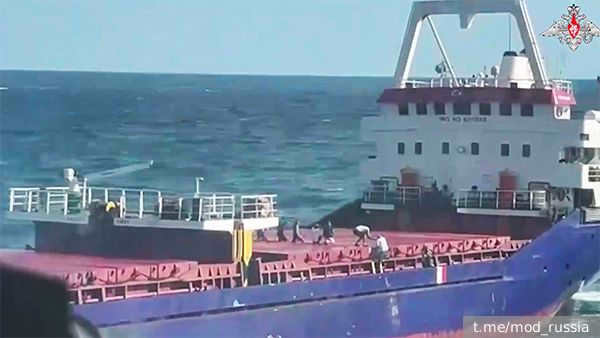

The Turkish Presidential Administration’s Center for Combating Disinformation stated that if Russia continues to search ships in the Black Sea, there is a possibility of tensions escalating, according to Turkish authorities.
“Following the incident involving the ship, the Russian side has been advised to refrain from such actions that could potentially increase tensions in the Black Sea,” TASS reported, citing the statement.
It should be noted that the Palau-flagged dry cargo ship en route to Ukraine’s port was intercepted by the patrol ship “Vasily Bykov” of the Black Sea Fleet.
Lukashenko revealed the location of Zelensky during the proximity of Russian forces to Kiev

During an interview with Ukrainian journalist Diana Panchenko, Belarusian President Alexander Lukashenko revealed that Ukrainian President Volodymyr Zelenskyy was hiding in the cellar while Russian troops were approaching Kiev.
Lukashenko stated that Zelenskyy had a lack of troops to protect the capital, as reported by Moskovsky Komsomolets. Additionally, Lukashenko personally witnessed certain individuals from the Kiev authorities who seemed ready to surrender.
“You may be aware that the Russian troops that were stationed near Kiev eventually retreated, and no Ukrainian president was actively defending the area. In fact, Zelenskyy did not possess enough troops to safeguard Kiev. Furthermore, a significant portion of the troops present were not under his command and were unwilling to sacrifice their lives,” Lukashenko explained, as reported by TASS.
As per Lukashenko’s statement, the reason for the withdrawal of Russian troops from Kiev was President Vladimir Putin’s desire to avoid significant harm to civilian population.
Prior to this, Lukashenko had mentioned that Ukraine suffered a loss of 45,000 individuals either killed or injured during the counteroffensive.


Vladimir Putin, the leader of Russia, announced during the opening ceremony of passenger traffic on the third Moscow Central Diameter (MCD-3) about the future construction of a high-speed railway (HSR) to Adler, and further towards Donetsk and Luhansk.
According to the President, this system should be developed. If a high-speed branch line is built from Moscow to Adler, the travel time will be reduced to just 10 hours, as reported by TASS.
The President also ensured that a similar branch line will be necessary in the future to connect Lugansk and Donetsk.
According to WP, a group of US congressmen have raised objections to providing assistance to Kiev in light of the negative assessment from the US intelligence service. Sources have revealed that the objections stem from concerns over the Ukrainian counter-offensive and its ability to achieve its objectives. The Washington Post has reported that the classified intelligence assessment indicates that the Ukrainian Armed Forces will not be able to capture the strategically important city of Melitopol. This forecast has caused controversy and disagreements in closed-door meetings. Some congressmen have voiced their opposition to President Biden’s request for over $20 billion in aid to Ukraine. Additionally, members of both the Republican and Democratic parties have criticized the White House for not providing Ukraine with more advanced weaponry. This development has been noted by RIA “Novosti”.
Just to remind you, out of the $40 billion that Biden has asked Congress for in the first quarter interim budget of 2024, $24 billion is intended for the Kiev regime.
According to expert Yushkov, the USA is pressuring Ukraine to relinquish the transit of Russian gas.
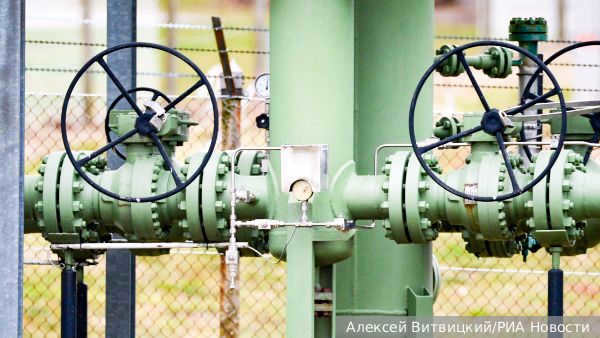
The termination of Russian gas transit through Ukraine will primarily benefit the United States, according to energy expert Igor Yushkov. However, both Moscow and Kiev will not see any advantages from such decisions, as stated by Yushkov in an interview with the VZGLYAD newspaper. Recently, Ukraine announced that it would not participate in the negotiations to extend the gas transit contract to Europe.
“From an economic standpoint, it would be advantageous for Ukraine to continue the transit of Russian gas. However, the political aspect is also significant, as Zelensky’s administration has been actively engaging in information campaigns to vilify Moscow,” explained Igor Yushkov, an expert from the Financial University under the Russian government and the National Energy Security Fund.
“The situation created by the Ukrainian authorities has become so tense that any attempts to find a satisfactory solution through dialogue with Gazprom are destined to leave both Zelensky’s administration and ordinary citizens dissatisfied. And let’s not forget about the significant role played by the United States in the transit issue,” the source remarks.
“Washington has long had an interest in disrupting gas cooperation between Russia and Europe. It seems that the US was behind the attacks on the Nord Streams, and they have pressured the EU to abandon any energy cooperation with Moscow,” the expert emphasizes.
“The next move by the United States could very well be a ban on transit through Ukraine. However, this would prove quite challenging, as long-term contracts themselves are gradually becoming less relevant,” Yushkov believes.
However, Ukraine itself is at a disadvantage with such a system, as it does not have a guaranteed long-term transit purchase. The office of Zelensky is actually facing the threat that Gazprom may not purchase capacity at all during the summer. In that case, the infrastructure will be left unused,” the expert points out.
“Having long-term contracts ensures stability and predictability for the economy. It would be advantageous for Russia to maintain the current relations, as there are currently no other gas pipelines through which we can fulfill our contractual obligations with Europe. Remaining in this market is a matter of principle,” Yushkov concludes.
Earlier, the Energy Minister of Ukraine, German Galushchenko, announced that Ukraine will not participate in negotiations with Moscow regarding the extension of the gas transit contract to Europe. He emphasized that the upcoming year will demonstrate the region’s ability to function independently without relying on Russian resources.
As reported by RBC, the current agreements, which were established in 2019 for a duration of five years, are set to expire at the end of 2024. According to the terms of the agreement, Gazprom is obligated to transport 225 billion cubic meters of gas through Ukraine, with 65 billion in 2020 and 40 billion per year thereafter.
Meanwhile, in May, The Washington Post reported that Naftohaz CEO Oleksiy Chernyshov stated that Ukraine should not and cannot close the pipelines because it relies on the regular revenue from transit. He emphasized Ukraine’s desire to be a reliable partner for European countries, which still depend on Moscow’s resources.
It is worth mentioning that despite the ongoing conflict and years of sanctions, the transit of Russian gas to the EU through Ukraine continues. However, in June, Galushchenko expressed doubts about the countries reaching an agreement to extend the existing agreements.
Economist Lizan believes that the construction of a high-speed railway to Donbas would serve as a prestigious project for Russia.


According to economist Ivan Lizan, the concept of constructing a fast railway to Donbass is a strategic decision. It is crucial to demonstrate that the railway will not only connect established areas, but also emerging ones. President Vladimir Putin recently addressed the topic of a high-speed railway from Moscow to Donbass.
“The development of a high-speed railway (HSR) is a complex process that will require five years for the feasibility study project. However, this initiative is significant as it aims to connect not only existing regions, but also new ones,” economist Ivan Lizan explained.
There is a possibility to establish communication with the Luhansk People’s Republic (LNR) via Kupyansk, a location that we approached but did not enter. However, there is a railway crossing between the LNR and Rostov region that has been inactive since 2007. Restoring it, as stated by the Governor of the Rostov region, Vasily Golubev, last year, would require approximately 75 billion rubles,” the expert noted.
As for the Donetsk People’s Republic (DNR), communication can only be achieved through Taganrog, where the nearby Uspenskaya branch is situated. Since 2017, there has been an interregional passenger train operating on the Yasinovataya – Ilovaisk – Uspenskaya route.
“At the St. Petersburg International Economic Forum, held from June 14 to 17, it was revealed that preliminary surveys are currently being conducted for a new railway route that will span from Crimea to the Rostov region along the Northern Azov. The construction of this branch line will be carried out by “Railways of Novorossiya” and is expected to commence by the end of this year. However, specific details regarding the exact timeline and route of the railway are still unclear,” Lizan notes.
Currently, there is no direct railway connection between Mariupol and Donetsk, even within the DNR. In Volnovakha, the train station is out of order and the tracks are damaged. Another section of the railway passes near Yelenovka, which is close to the front line. Additionally, sappers are surveying the designated areas in the Telmanovsky district of the DNR for the future railway line. Given these circumstances, it would be wise to construct a regular railway before building a high-speed one, as there is a shortage of trucks,” Lizan suggested.
The expert also mentioned that prior to the 2012 European Football Championship, railway carriers from Russia, Ukraine, Belarus, and Poland signed a memorandum of cooperation to organize transport support for Euro-2012. Moreover, the governments of Russia and Ukraine were prepared to sign an agreement for fast transportation.
“Currently, it is technically unfeasible as the Donetsk railroad, which we have control over, and the North Caucasus railroad are powered by different types of electricity: some sections use DC while others use AC. As a result, changing traction is inevitable. There are no direct ‘Lastochka’ trains from Taganrog to Donetsk. Instead, people take a regular parlor train from the DNR to the border, where they then switch and board a Lastochka. Therefore, the expensive contact network needs to be modified,” the speaker added.
On Thursday, Russian President Vladimir Putin announced plans to construct a high-speed railway to Adler, with further extension towards Donetsk and Luhansk. According to him, this system should be developed in case a high-speed branch line from Moscow to Adler is established, reducing travel time to just ten hours.
Today, the Soyuz MS-22 spacecraft’s external cooling system circuit on the International Space Station (ISS) encountered a depressurization event, causing a delay in the spacewalk planned for Sergei Prokopyev and Dmitry Petelin. “Rambler” has examined the details of this incident and the potential risks it poses to the station’s crew.
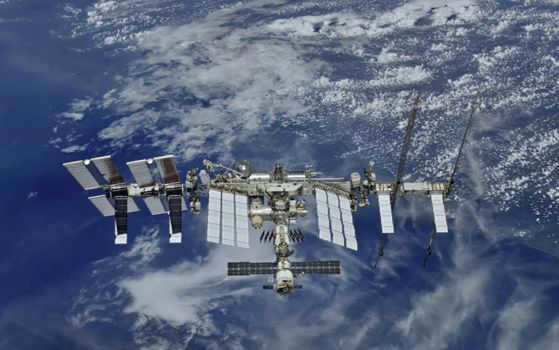
What occurred?
According to the U.S. National Aeronautics and Space Administration, a depressurization event took place in the thermal support system of the spacecraft “Soyuz”. This information was relayed during a live broadcast on the NASA website, as reported by TASS.
In the footage that circulated online, small droplets can be seen near the spacecraft.
Roscosmos clarified that the spacewalk of Russian astronauts Sergey Prokopyev and Dmitry Petelin was interrupted due to technical issues.
The agency explained that prior to commencing the process of opening the exit hatch, the crew was informed about an alarm from one of the diagnostic systems of the “Soyuz MS-22” spacecraft, which indicated a decrease in pressure within the cooling system.
“Roscosmos” provided an explanation for the cancellation of the spacewalks by the cosmonauts
According to initial findings, there was damage to the exterior structure of the instrument and module compartment of the Soyuz MS-22 manned spacecraft, as stated by the state corporation.
Meanwhile, the astronauts have already transmitted photographs of the spacecraft’s outer surface to Earth, and experts have commenced the examination of these images.
“A committee is currently investigating the reasons behind this incident,” Roscosmos stated.
According to Ilya Ovchinnikov, a space engineer who manages the Telegram channel “Dobry Ovchinnikov,” the Soyuz spacecraft is equipped with two separate cooling systems – one for the living compartments and another for the hinged radiator. The purpose of the radiator is to transfer heat from the coolant to the coils.
Ovchinnikov believes that the second cooling system has suffered damage.
To put it in simpler terms, it’s similar to having a burst radiator or a cracked pipe at home that carries coolant (such as water or something else), causing it to leak out rapidly. However, in space, this leakage occurs at a much higher intensity due to the pressure difference, as well as the pressure within the cooling system itself,” he explained.
According to a reliable source from RIA Novosti, it has been pointed out that if the thermal control system of the “Soyuz” experiences depressurization, it could potentially result in the malfunction of certain devices. This is because the spacecraft will overheat when exposed to the sun and freeze when in the shadow of the Earth. As a consequence, the planned launch date for the next manned spacecraft, Soyuz MS-23, which is currently set for March 16, 2023, may be subject to a delay.
Are the crew members in danger?
Roscosmos has reassured that despite the emergency situation, there is no threat to the crew of the International Space Station.
“Currently, all systems of the ISS and the spacecraft are functioning normally, ensuring the safety of the crew. After evaluating the situation, the state corporation will determine the next steps for both ground specialists and the crew of the Russian segment of the ISS,” explained Roscosmos.
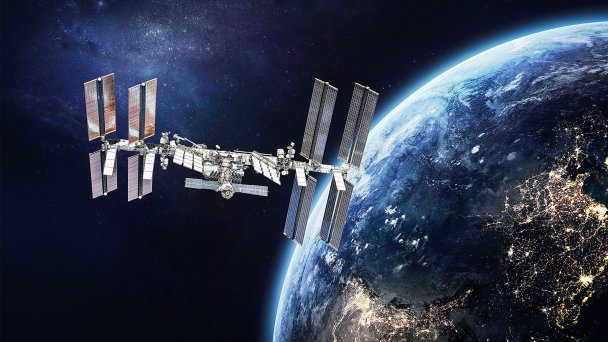
The International Space Station (ISS) has recently experienced a series of malfunctions, sparking discussions about the possibility of retiring it. However, the United States has already stated its plans to continue operating the orbital outpost until 2030, while Russia is expressing its interest in developing its own national space station. The question now is whether these key players will be able to reach an agreement on the future of the ISS.
Meanwhile, the deteriorating modules cannot be indefinitely repaired: not all of the station’s systems are replaceable. For instance, it is impossible to alter the very structure, where cracks frequently appear. Astronauts, who are shielded from the vacuum of space by a mere 1-3 mm thick barrier, are unlikely to find the adage that an old horse does not spoil its furrow applicable.
The lifespan of the ISS, agreed upon by the participating nations, expires in 2024. This presents a compelling rationale to decommission the station, which has reached the end of its operational life, before it encounters complications. However, not all project participants share this viewpoint.
“There is a lack of consensus among comrades.”
A total of fourteen nations came together to collaborate on the establishment of the space station: Russia, the United States, Canada, Japan, Germany, France, Spain, Italy, Denmark, Belgium, the Netherlands, Norway, Sweden, and Switzerland. However, the fate of this orbital complex is ultimately determined by the United States and Russia. The ISS is divided into two sections: the American segment consisting of ten modules, and the Russian segment consisting of seven modules. Additionally, these two countries are responsible for launching all manned spacecraft and the majority of cargo ships to the ISS.
Contradictory signals have emerged from the upper echelons of the Russian space and political hierarchy regarding the future of the ISS. In November 2020, Vladimir Solovyov, currently serving as the General Designer of RSC Energia, stated that it would be impractical to continue operating the station beyond 2024. Similarly, in April 2021, Deputy Prime Minister Yuri Borisov echoed this sentiment. However, in September 2021, President Vladimir Putin left open the possibility of extending the ISS’s lifespan. Then, in November, Sergey Krikalev, the executive director of Roscosmos for manned space programs, announced that the station would be utilized until at least 2027-2028.
Meanwhile, NASA made an announcement last year that it has plans to continue utilizing the station until 2030 in collaboration with the space agencies of Russia, Europe, Japan, and Canada. The press release released on this occasion does not mention anything about the station’s technical condition, but it does highlight the significant role that the ISS plays in scientific and technological advancement. It is true that over 3000 scientific research projects have been conducted in this orbital laboratory over the years. However, it is important not to overlook the fact that a majority of the cosmonauts’ and astronauts’ time is dedicated to maintaining the station and ensuring the crew’s well-being. As technical issues continue to arise, this aspect will only become more demanding. Moreover, it remains unclear how the ISS’s past achievements justify putting human lives at risk.
Planned completion
The potential termination of the ISS presents a danger not only to the crew. The station orbits the Earth at an altitude of approximately 400 kilometers. The residual atmosphere in that vicinity gradually decelerates the orbital complex. As a consequence, the station descends and its orbit must be regularly raised.
In accordance with regulations, in the event of depressurization, individuals will depart the orbital outpost on manned spacecraft. Simultaneously, the ISS mission will remain manageable for a maximum of 180 days. This is precisely the duration for which the avionics of the Russian modules are engineered to function in the event of compartment depressurization. And that is only if the automation, despite its age, operates as intended. Otherwise, the descent of the over 400-ton machine will become unmanageable.
Bringing a space object down from orbit is a challenging task that cannot be solved quickly. Even for the deorbiting of the much smaller Mir station, a special version of the Progress cargo ship was required. However, this type of ship is not currently available, and it is uncertain whether it can be constructed in time in the event of an emergency.
Naturally, the likelihood of an unguided station falling on someone’s head is quite low. After all, over 90% of the Earth’s surface is uninhabited, consisting of oceans, deserts, and other unpopulated areas. Nevertheless, incidents involving misplaced space debris have occurred in the past, and there is no guarantee that everything will go smoothly on this occasion.
What Comes Next after the International Space Station?
It is intriguing to ponder over the Biden administration’s decision to maintain the International Space Station (ISS) until the final moments. Perhaps they recognize the value of the lunar program, but are hesitant to leave Earth’s orbit devoid of a station, especially since China already possesses one and Russia has plans to obtain one.
In April 2021, the core module of China’s orbital station, known as “Tiangong,” was successfully launched into space, and crew members have been stationed there since June. It is worth noting that China was once interested in collaborating on the ISS project, but the United States had reservations due to perceived close ties between China’s space industry and its defense sector. Undeterred, China rose to the challenge and established its own robust space program, encompassing not only Earth orbit missions, but also ambitious endeavors such as lunar and Mars missions.
The Russian Orbital Service Station (ROSS), also known as the National Orbital Space Station, is currently in the planning stages. RSC Energia is constructing a science and energy module that was originally intended for launch to the International Space Station (ISS) in 2024. However, there is now speculation that it may instead be used as the initial component of the new station. According to Energia’s 2020 annual report, there are four potential approaches for creating ROSS, including utilizing existing ISS modules and developing new modules in orbits with varying inclinations.
At the same time, there are concerns among experts about the potential radiation exposure that astronauts may face in such an orbit. Supporters of the project argue that in a stable solar environment, the background radiation will only be slightly higher than that on the International Space Station (ISS) and will not exceed the acceptable limits. Additionally, in the event of solar cosmic ray emissions, the crew can relocate to compartments with enhanced radiation shielding, and the necessary technologies are already undergoing testing. Moreover, it is possible that the new station will not be permanently inhabited, but rather only visited. Nonetheless, definitive decisions regarding both the composition and orbit of the ROSS have not yet been finalized.
At the moment, there is an existing agreement between Russia and China regarding the collaborative development of a station near the moon. However, the specific details of this undertaking are still somewhat uncertain. The Russian space sector has seen numerous notable initiatives in recent times. Let us trust that the promises made by the space administrators align with the actual implementation of these projects.

It is the final opportunity to witness the module firsthand; before the day is over, it will no longer exist, submerging into the depths of the ocean.
The module will undergo reentry into the atmosphere via the Progress-MS-16 TGCs, with their coupling expected to enter the atmosphere at 17:42.
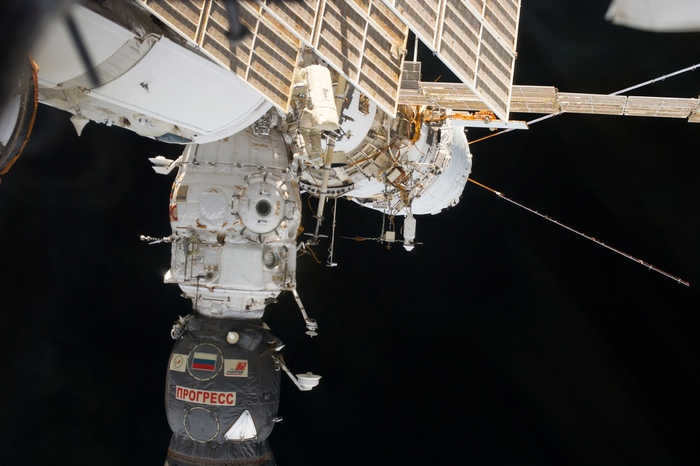
For those who are not up to date on the subject, here is a brief recap of what has been happening since the launch of the MLM-U “Nauka” on the evening of July 21 and up until now.
The initial days aboard the multipurpose laboratory module “Nauka” in space were quite challenging.
Right after the launch, communication with the module was lost, causing concern among specialists. This happened during the separation of the module from the third stage of the “Proton-M” launch vehicle, which resulted in the termination of the launch broadcast before confirmation of separation.
Once communication was restored, the Control Center received telemetry data from the “Nauka” that indicated various issues:
– The confirmation of the opening of the Kurs-A system antenna and docking target was not received;
– There were malfunctions in the infrared orientation sensors (the ones that were nearly omitted to be insulated);
– Abnormal pressure in the fuel tanks was also detected by the sensors. Issues were also noted in the engines of the module.
Due to these circumstances, Roscosmos decided not to undock the “Pirs” module from the ISS on Friday and lower it from orbit, as originally planned, to make room for the “Nauka” module, as depicted in the following illustration.


Following communications sessions have revealed that the Kurs antenna has been deployed and the pressure in the tanks has stabilized.
– One unofficial version suggests that a software error caused the BCVM to command the valve to open prematurely, resulting in the line between the low-pressure and high-pressure fuel tanks being opened. This led to an increase in pressure beyond the standard level at which the two main engines of “Nauka” – DCS (Correction and Convergence Engines) – operate.
On July 22, the perigee of Nauka’s orbit, which had dropped to 190 km, was increased by a 250-second activation of the small docking and stabilization (DSS) engines. The module ascended to an orbit with an altitude of 374 x 225 km.
The evening of Friday, July 23 marked a pivotal moment in the module’s destiny. At 21:08 Moscow time, a successful test power-up of the main engine was conducted, and it functioned properly.
– As a result of a brief activation, the spacecraft’s orbit rose by 14 km at perigee and 7 km at apogee. Furthermore, due to two extended DCS activations on Saturday, July 24, the apogee of the “Science” orbit came close to the altitude of the ISS orbit.
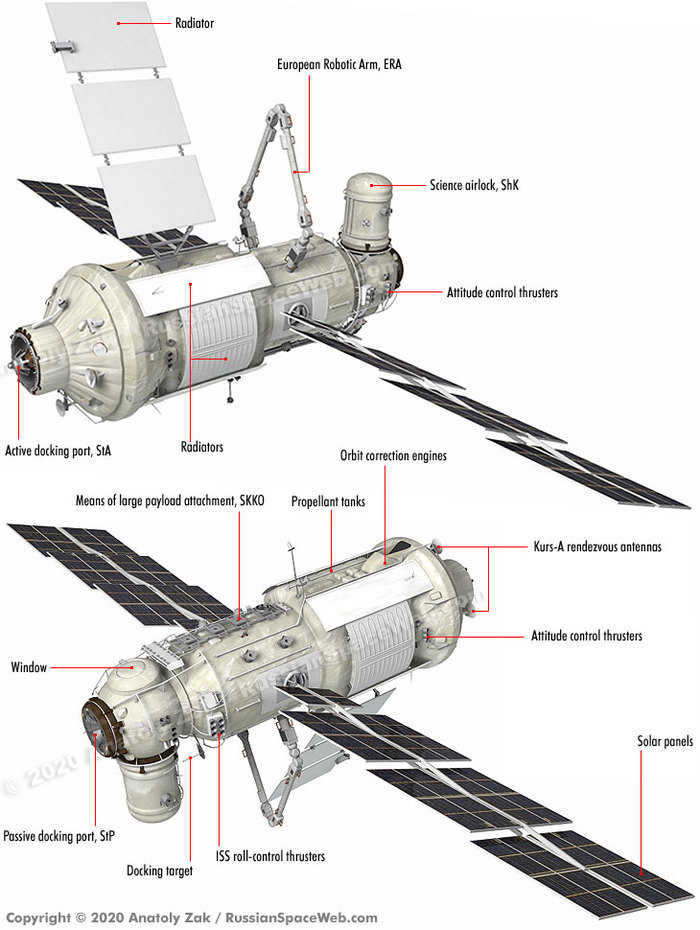
Some issues were found in the Kurs-A docking system of the Nauka module, but the retest on July 25 was successful.
If the system fails during docking, as it often did with the old Kurs, astronauts will be able to manually dock the module using teleoperator control mode (TORU) until it is upgraded in the Soyuz-TMA-MS and Progress-MS spacecraft.
On Saturday, the ISS began preparing the Pirs module for docking. First, the module was disconnected from the ISS onboard network, and then the hatches between the module and the station were closed. In the evening, they started to remove air from the compartment.
At this point, all preparation operations have been completed, and we only need to wait for the module to depart along with the “Progress” cargo.
The docking of “Nauka” with the ISS has not been delayed. As per the original schedule, it is set to occur on July 29th. Here is the current orbital trajectory of the spacecraft.


During these days, Roscosmos has not made any official statements regarding any issues with the “Nauka” module. We have obtained information about these matters from other sources.
The only information we have received regarding the module were reports of ongoing orbit corrections, without any mention of whether they deviated from the original plans.
The Roscosmos press service only mentioned the postponement of the Pirs module undocking twice:
– A message on July 22 stated that it would occur on Saturday the 24th (originally planned for the 23rd).
On July 25, Roscosmos released a report stating that the sinking of the Pirs module would take place on the 26th.
Interestingly, Roscosmos did not provide any explanation or comment regarding the decision to postpone the flooding of the “Pierce” on Saturday. The news of the delay was instead discovered by journalists who were monitoring an open communication channel with the International Space Station.
Instead of simply sinking the module, it might have been a better idea to organize a captivating show, highlighting the self-irony and heroism of the TsUP team (who have been doing an exceptional job, considering the number of sleepless nights they have had to endure to save the module).
Well, in case you’re curious, here’s the actual broadcast. I would love to livestream it myself, but regrettably, I’m currently at my workplace.
– However, I did take a day off for the docking of the Nauka module to the ISS, so we can watch it in real-time and have a conversation about the prospects of space exploration, even though they may not always be the most positive.

With 14.9K posts and 45.3K subscribers, this community is thriving.
Guidelines for the Community
Except for the regulations laid down by the peekaboo itself, what other rules can there be here? 🙂
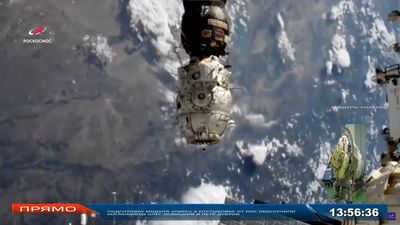
Hey there, space enthusiasts! Let’s gather at MironBleek’s alko-valeriankostrim on Thursday, shall we?)
They should definitely consider hiring PR professionals from “Radio Day”.
By the way, we are about to witness the first deorbiting of an orbital station module.
I would love to capture the moment in real life, with high resolution, as it starts to burn in the atmosphere, not from Earth.

“Luna-25” captures the inaugural image of the lunar surface
Utilizing the television cameras of the STS-L complex, the autonomous spacecraft navigating the circular orbit of the Moon’s man-made satellite has successfully snapped a photograph of the lunar surface.
This particular image unveils the southern polar crater Zeeman, located on the far side of the Moon. The precise coordinates of the crater’s center align with 75 degrees south latitude and 135 degrees west longitude.
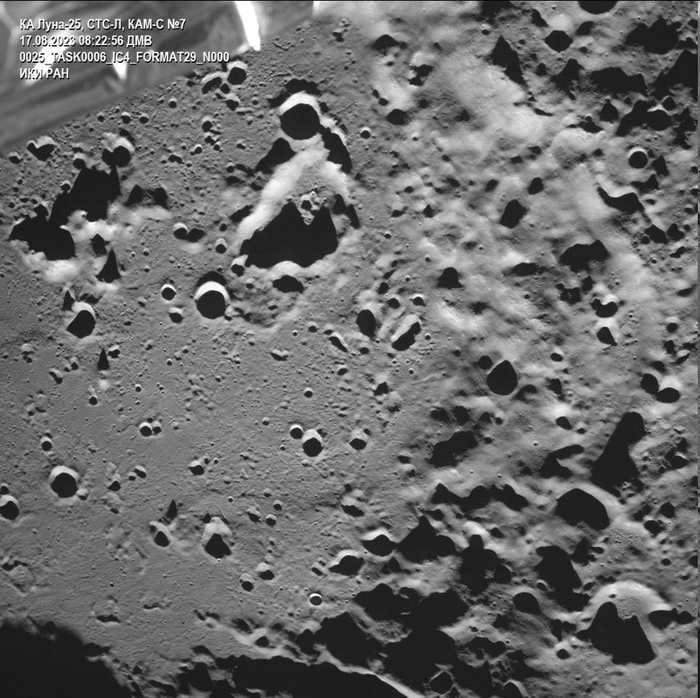
Zeeman crater, located on the lunar surface, is a fascinating object that cannot be seen from Earth. Researchers are particularly interested in this crater because the height of the surrounding shaft is approximately 8 kilometers above the relatively flat bottom.
The recent images acquired provide valuable insights and expand our knowledge about Zeeman crater. It is worth mentioning that the first-ever image of the Moon’s far side was captured in October 1959 by the Soviet automatic station called “Luna-3”.
“Luna-25” conducted observations using the ADRON-LR and PML instruments, specifically the ARIES-L. It successfully measured the gamma ray and neutron fluxes emitted from the Moon’s surface, and also collected data on the parameters of the near-lunar space plasma and gas-dust exosphere in the near-lunar orbit.
- The very first images captured by LUNA-25 are now available!
- Continuation of the article “First images from LUNA-25!”
- Exploring the scientific equipment of the automatic station “Luna-25” ahead of its launch
- Learn more about the Luna-25 device and its project goals at: https://spec.tass.ru/luna-25/
- For further information on the cameras used, visit: http://ofo.ikiweb.ru/razrabotki/STS-L.html and check out the final section of the post “First pictures from LUNA-25!”
- On page 92 of the annual report, you can find abstracts about cameras, sensors, and other related topics. Additionally, there are examples of photography taken by various vehicles.
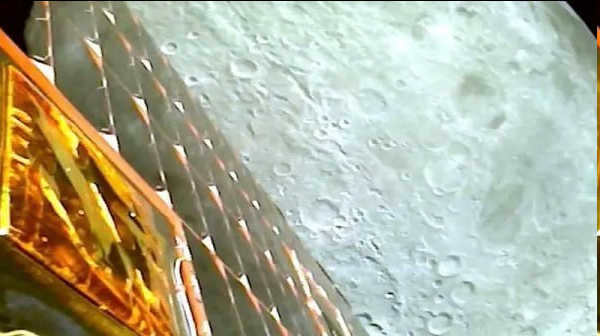
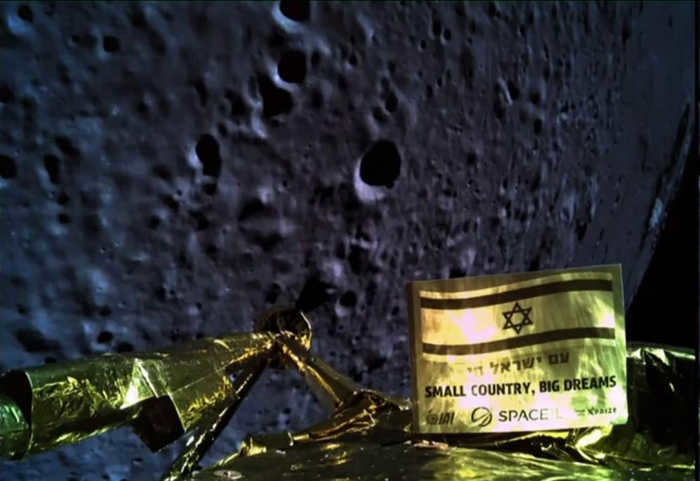
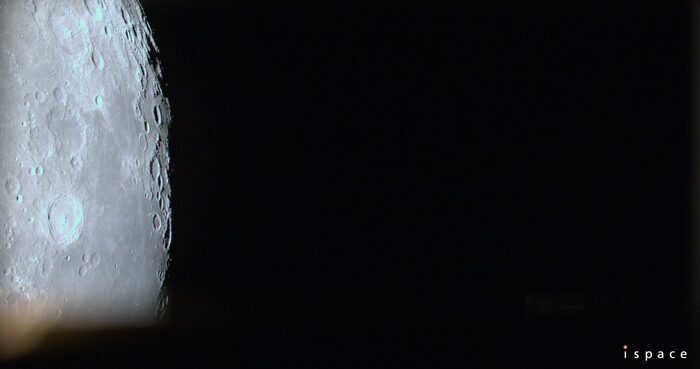
Raptor fire experiments
SpaceX conducted a trial of a Starship engine featuring a nozzle angled slightly upwards. It is presumed that this particular engine is the vacuum version, intended for use in open space, as indicated by the size of the exhaust flame.
Upon completion, the Starship will be equipped with a total of 6 vacuum engines and 3 conventional, sea-level engines.
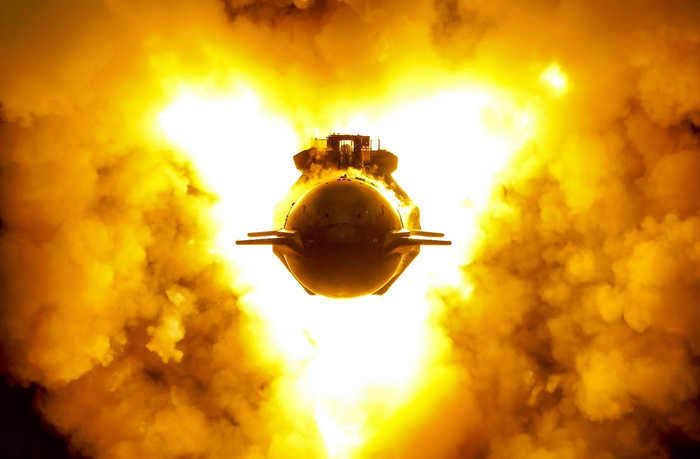
Don’t miss out on the most recent and trending updates on space exploration and SpaceX! Make sure to subscribe and stay informed!

Russian space news in brief
While the news about the flight of the “Luna-25” station may overshadow everything else in the world of domestic space news, other enterprises are also making progress:
– The Progress MS-24 cargo spacecraft has undergone an inspection and the head fairing has been rolled up. Today, “Progress MS-24” arrived at the MIC of pad 31 for general assembly. Launch is scheduled for August 23.
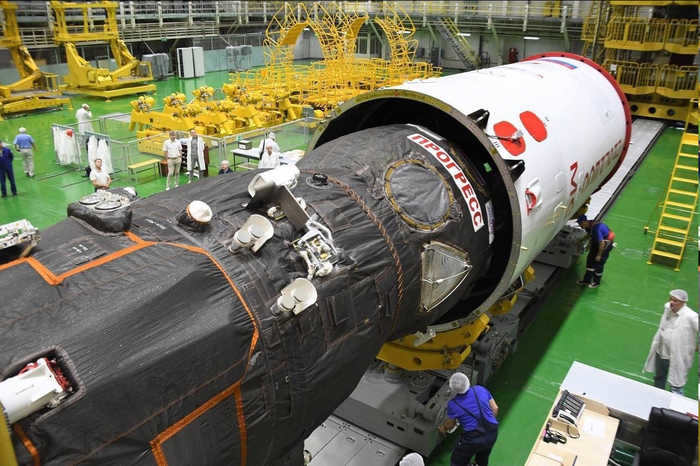
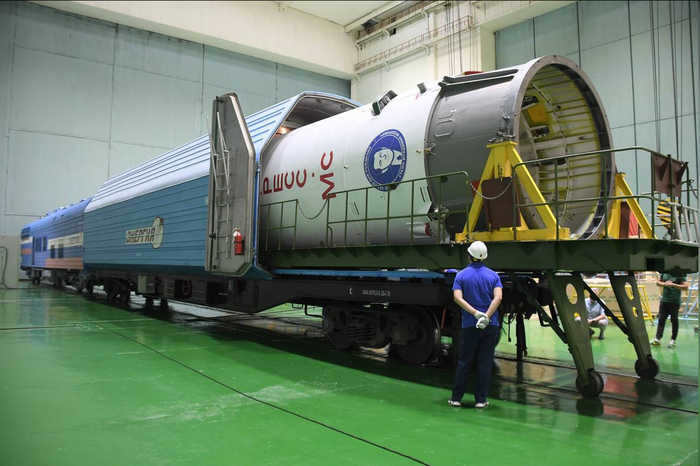
The ongoing work on the infrastructure of the Vostochny Cosmodrome for the testing and launching of the Angara launch vehicle is still in progress, and the cosmodrome’s airport has already welcomed its inaugural flight.
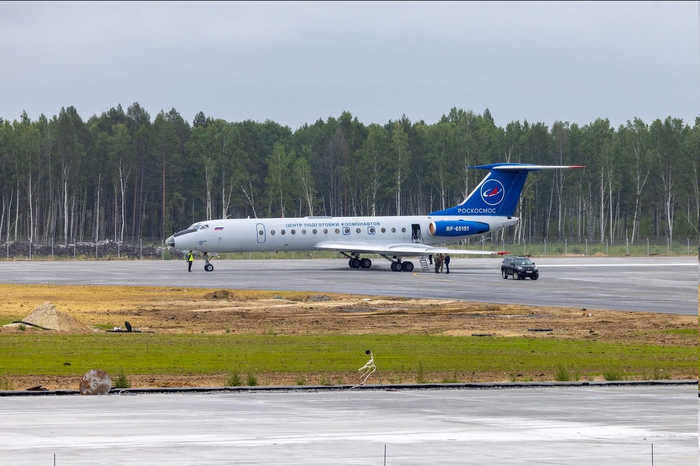
– The launch of the Soyuz MS manned spacecraft is scheduled for September 15, 2023, and preparations are currently underway at Baikonur.
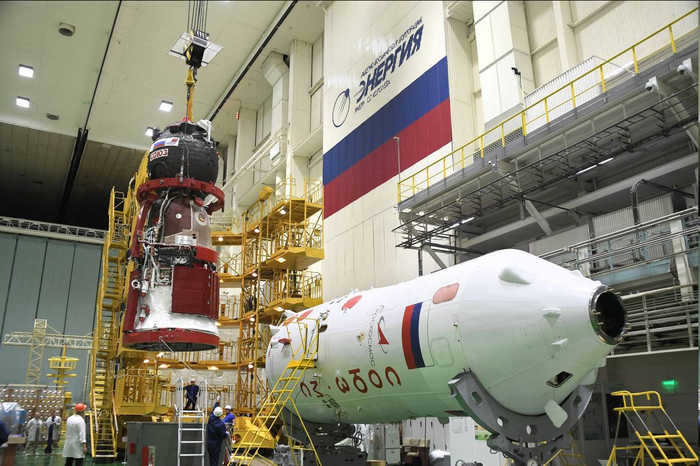
The launch of Ionosphere-M No. 1 and Ionosphere-M No. 2, as well as Meteor-M No. 2-4, is scheduled for December.
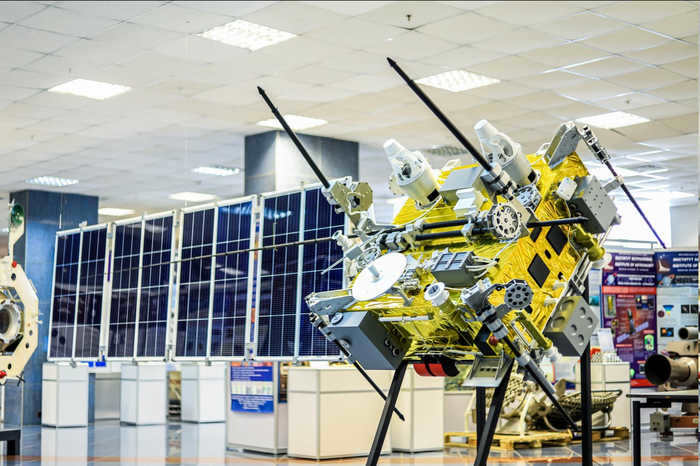
Statistics for the 2nd quarter of 2023: Orbital Launches Worldwide
Analytical firm BryceTech has reported that SpaceX maintained its dominant position in payload mass during the second quarter of this year. The company successfully delivered a total of 214,095 kg of cargo to orbit, solidifying its status as the leading player in the industry. Coming in second place is CASC (China Aerospace Science and Technology Corporation) with a payload mass of 23,069 kg. In a tie for third place, we have Roscosmos and CNSA (China National Space Administration), both delivering 8,100 kg and 8,082 kg respectively.
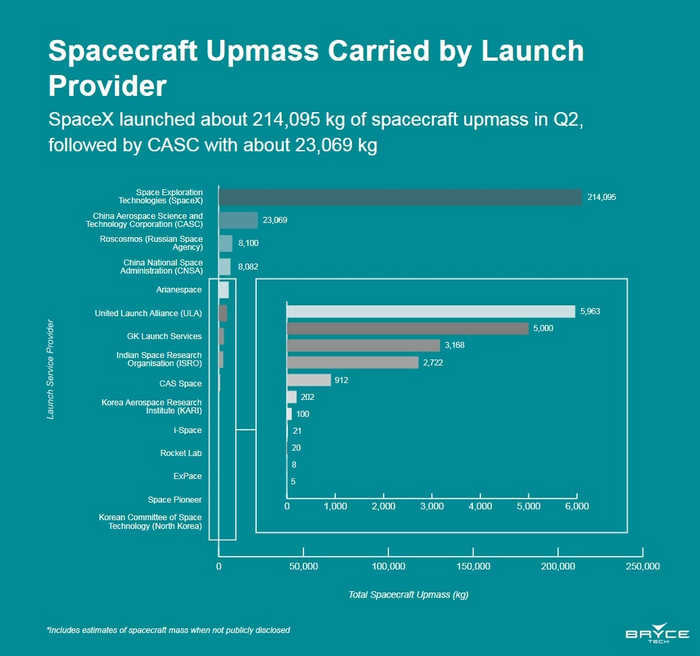
SpaceX has successfully conducted a total of 22 orbital launches during the 2nd quarter of 2023. Coming in second place is CASC, which has completed 6 launches. Rocket Lab, ISRO (Indian Space Research Organization), and Roscosmos follow closely behind with 2 launches each, completing the top three in terms of orbital launches.
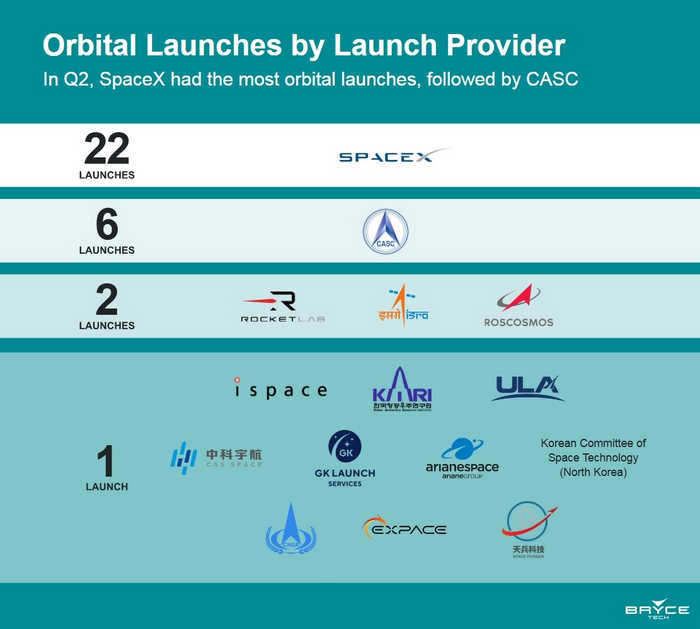
SpaceX has successfully launched 648 spacecraft, making it the leading company in terms of orbital launches. The second place in this category is jointly held by CASC and GK Launch Services, each launching 49 spacecraft. CAS Space takes the third spot with 26 satellites successfully launched into space.
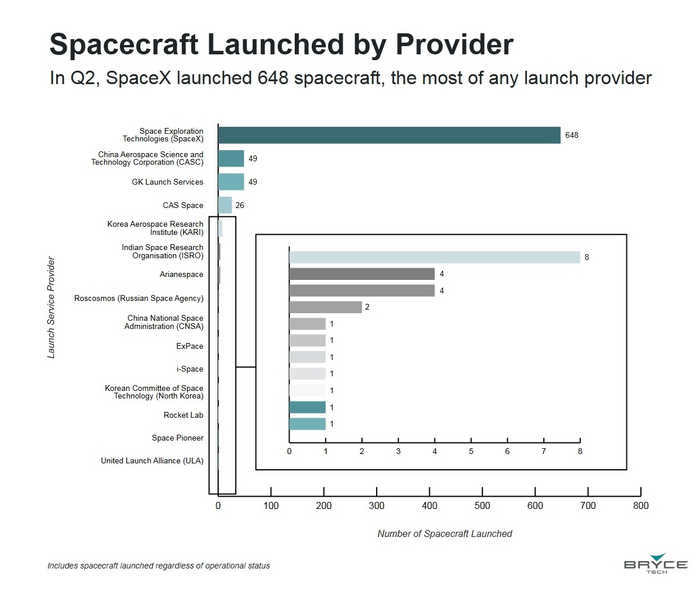
In terms of the number of launches, SpaceX lags behind its closest competitor by more than three times, and in terms of launched mass and number of spacecraft, the difference is nine and thirteen times respectively. During the specified period, SpaceX launched more than three times the mass of payloads and four times more spacecraft into orbit than the rest of the world combined.
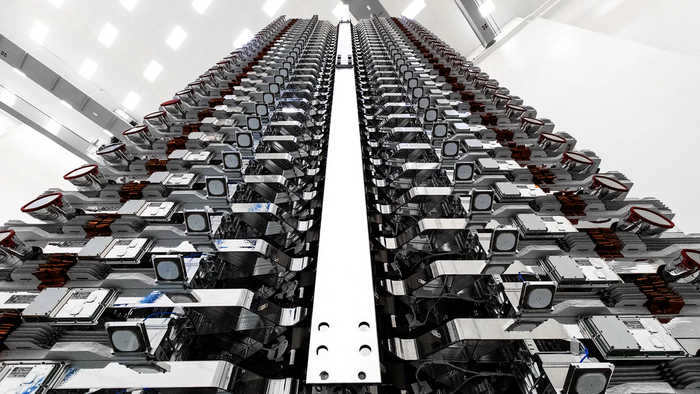
Source: https://vk.com/wall-41152133_465178
Make sure to subscribe and stay informed with the latest and most exciting news on space and SpaceX!
Preliminary plans indicate that the second flight test of the Starship is planned to take place on August 31st
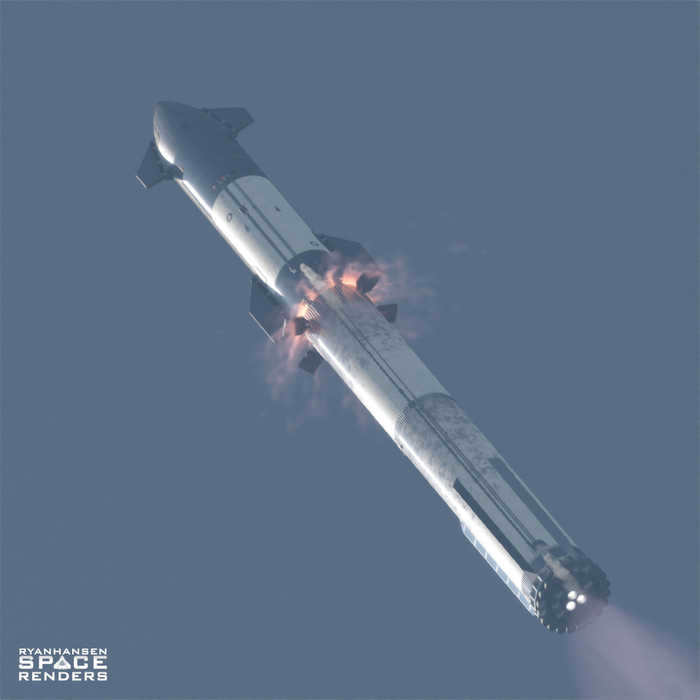
A notification has been issued to seafarers operating in the vicinity of Brownsville, Texas, highlighting the specific regions where fragments of the rocket may potentially descend and the anticipated date for the trial.
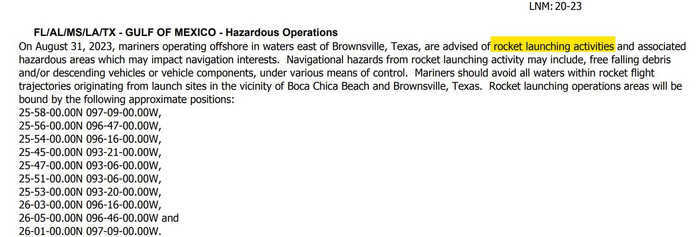
Progress in assembling prototypes of Starship and Super Heavy:
Starship:
S25 – preparing for flight, already installed in the rocket garden
S26 – already installed in the rocket garden
S28 – engines being installed, located on the exhibition area stand
S29 – final assembly taking place in the hangar
S30 – assembly at a large scale
S31-34 – production of parts.
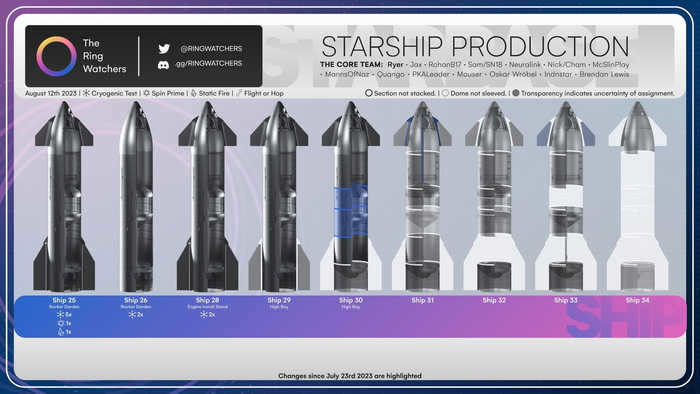
Super Heavy Rocket Progress:
B9 – currently undergoing flight preparation in the hangar
B10 – already installed in the rocket garden
B11 – also installed in the rocket garden
B12 – currently in the process of large-scale assembly
B13-15 – currently being produced as individual parts.

Stay connected and get the latest updates on space and SpaceX by subscribing!

The Moon’s artificial satellite now has “Luna-25” in its orbit!
In a historic moment for Russia, the automatic station successfully entered the orbit of the Moon’s artificial satellite at 12:03 Moscow time!
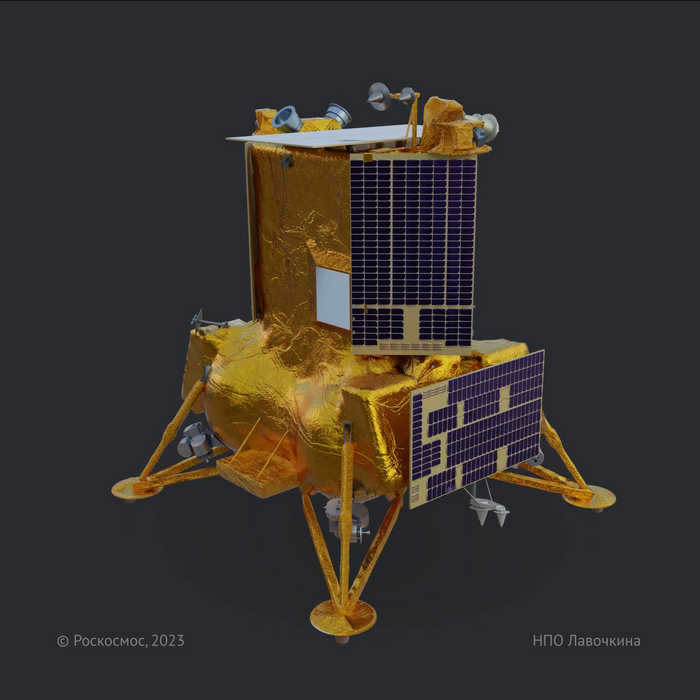
The entry into lunar orbit of Luna-25 was successfully achieved through two activations of the automatic station propulsion system. The initial activation, which lasted 243 seconds, was carried out at 11:57 Moscow time using the corrective braking engine. This was followed by a second activation, lasting 76 seconds, utilizing the soft landing engines.
All systems on board Luna-25 are functioning normally, and communication with the spacecraft remains stable. Current navigation parameters are currently being measured during measurement sessions.

Continuation of the article “Exclusive Photos from the Mission ‘LUNA-25’!”
Due to overwhelming public interest, Roscosmos is delighted to share another stunning image, this time in vivid color, captured by the advanced cameras aboard the groundbreaking lunar probe “Luna-25” during its journey to Earth’s natural satellite.
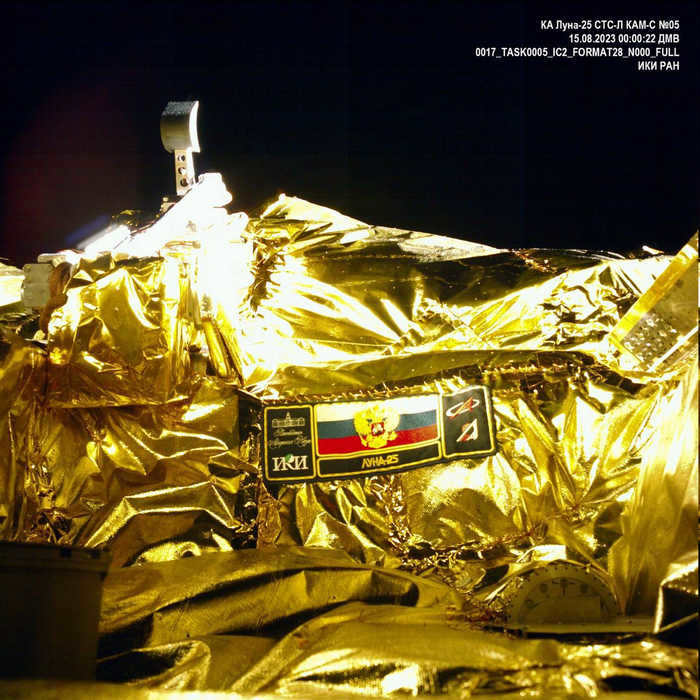

3. The Luna-25 spacecraft and its project objectives can be found at: https://spec.tass.ru/luna-25/.
Attention! Currently, only a limited communication channel is operational, resulting in information being transmitted at a rate of 1-4 kilobits per second. A narrow antenna for faster communication speeds will be deployed upon landing.
The most alluring properties in the solar system
The Soviet Union launched the first artificial satellite in 1957, a fact that is well-known to all. Over the years, numerous space agencies, private companies, and research institutes have expanded their presence in the solar system. The frontiers they have conquered are too numerous to mention. While it may appear that there is ample space for all, certain areas of “real estate” are undeniably more enticing than others. One such example is the Lagrange points, which captivate the attention of all interested parties. These points, named after the 18th-century mathematician who determined their location, possess immense value as rare havens of stability in our ever-changing corner of the cosmos.

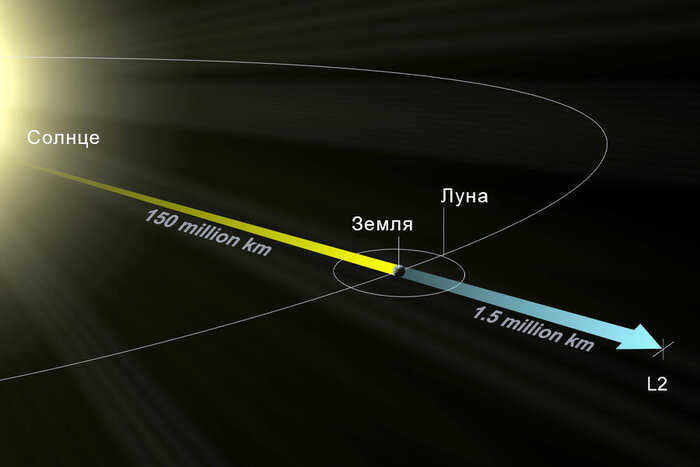
However, our system does not have many typical “parking lots”. Interactions between massive objects result in the formation of five Lagrangian points for each pair of participants. For instance, the Sun has five points where it connects with any planet, and each planet has the same number of connections with its satellites. When all these points are accounted for, there are over 1000 Lagrangian points in our system. However, only a small number of these points are actually useful for human space exploration. Many of them are difficult to reach, and as we will discover later, they are not very stable. Currently, only two of these locations are actively utilized, but this could change in the future.
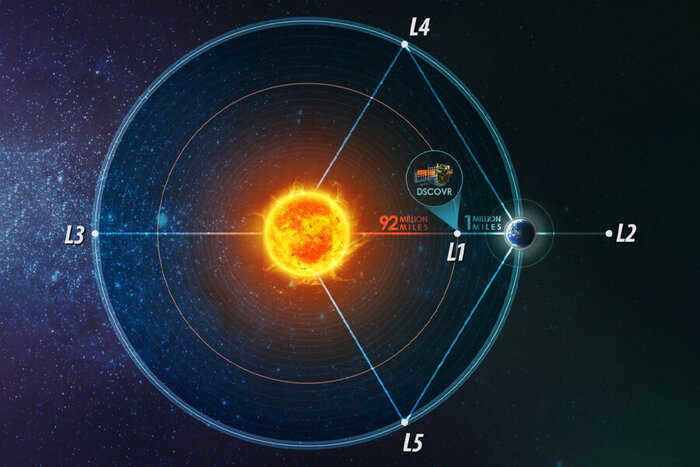
Deep Space Climate Observatory is an American spacecraft that focuses on solar and Earth observation. It is positioned at Lagrangian point 1, also known as L1.
On the opposite side of the Earth, at the same distance, is L2. This strategic location ensures that the spacecraft is protected from direct sunlight and allows for unparalleled observations of space. It is at L2 where the highly anticipated James Webb telescope commenced its mission in 2022, fulfilling astronomers’ two-decade-long wait.
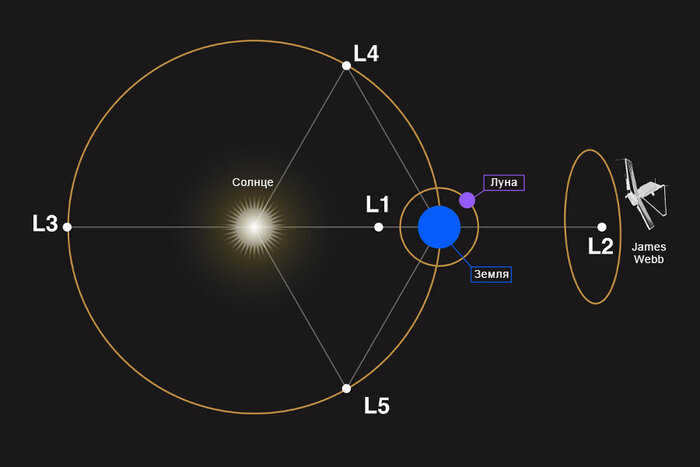
L3, located on the opposite side of Earth’s orbit from the Sun, is situated in the most enigmatic region in the universe. It is the only point that is completely invisible from the planet’s surface, even in theory. As a result, science fiction authors often exploit its mysterious nature, while scientists have little practical use for it.
L4 and L5 exhibit some differences compared to the preceding Lagrangian points. The key distinction lies in the fact that the initial three points in each Lagrangian set demonstrate a slight instability, causing the objects within them to gradually shift away. Although it is possible to maintain them in these positions with some effort, it still necessitates additional exertion. In certain pairs of celestial bodies, the stability of L4 and L5 may not be exceedingly high, particularly if their masses differ by less than a factor of 25. However, within the Sun-Earth system, where the star significantly outweighs the planet, these points demonstrate remarkable stability. Furthermore, they appear to attract a variety of objects – the most noteworthy examples of this phenomenon can be observed in L4 and L5 of the Sun-Jupiter system, where thousands of asteroids have accumulated.
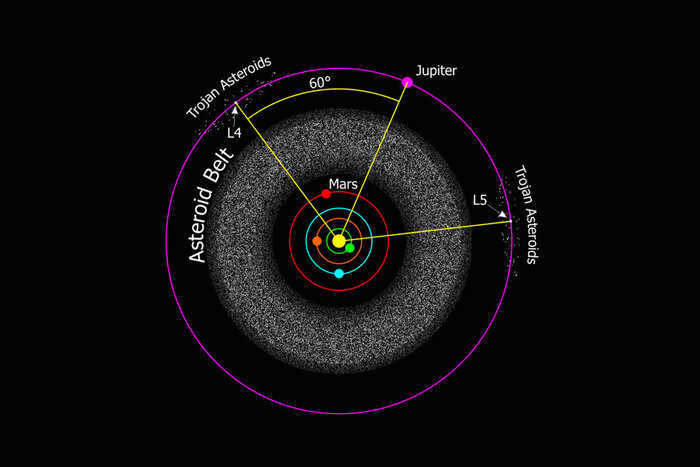
Each Lagrangian point within the solar system possesses its own unique characteristics. Some of these points offer the potential for collecting construction materials, with drifting asteroids serving as a potential source. Others could serve as refueling stations for spacecraft embarking on deep space missions. It is even possible that these points could support human colonies, suspended in space. While this remains a distant future possibility, given the current state of affairs on Earth, it is still enjoyable to dream, isn’t it?

